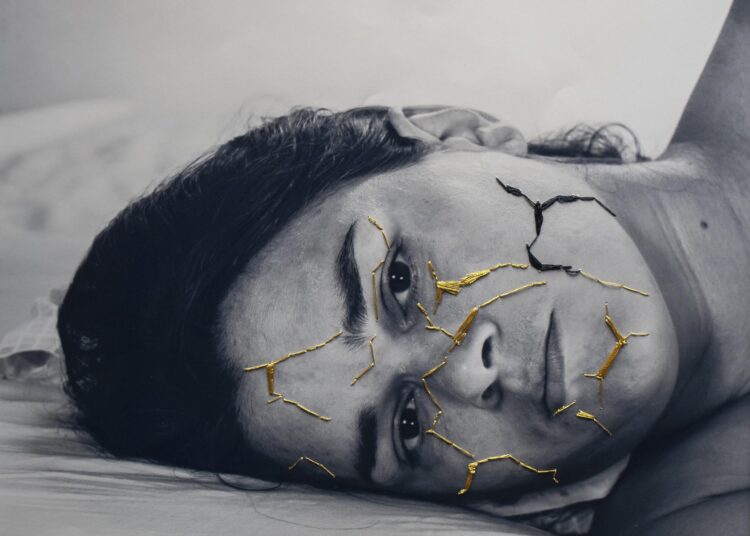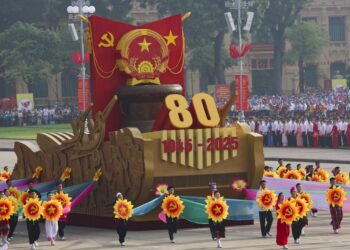Adriana Pérez Mugia (Pinar del Río, 1985) has traveled a long road, in art and in life, until today. Her self-referential work is a ceaseless search for the transcendental properties of being (ontology), a delving into essences with artistic tools.
She asks the same old, elementally profound questions about the origins of human beings, their destiny, their unpostponable right/obligation to live. She works for herself and from herself, for others. She believes her experience is transmissible. And she truly achieves it.
I understand that she doesn’t want to proselytize, but rather to show the path she has taken toward self-acceptance, self-understanding and commitment to her fellow human beings. She not only embraces her body, but also exalts it.
Painting, creative crafts, performance, biblical studies and photography have all been present in her development.
Today she shows us pieces from Mi primer hogar (My First Home), one of her series, comprised of photographs embroidered on printed paper. I feel that in this artistic gesture there is an effort to resize, on a symbolic level, those tasks that ancestral phallocentrism defined as exclusively feminine. She literally embroiders on the pain and joy of being a woman; she underlines, comments and shouts from these pieces born of introspection. Her work is a call to action and a profession of faith.
And here they are, in word and deed. Salute this talented artist.
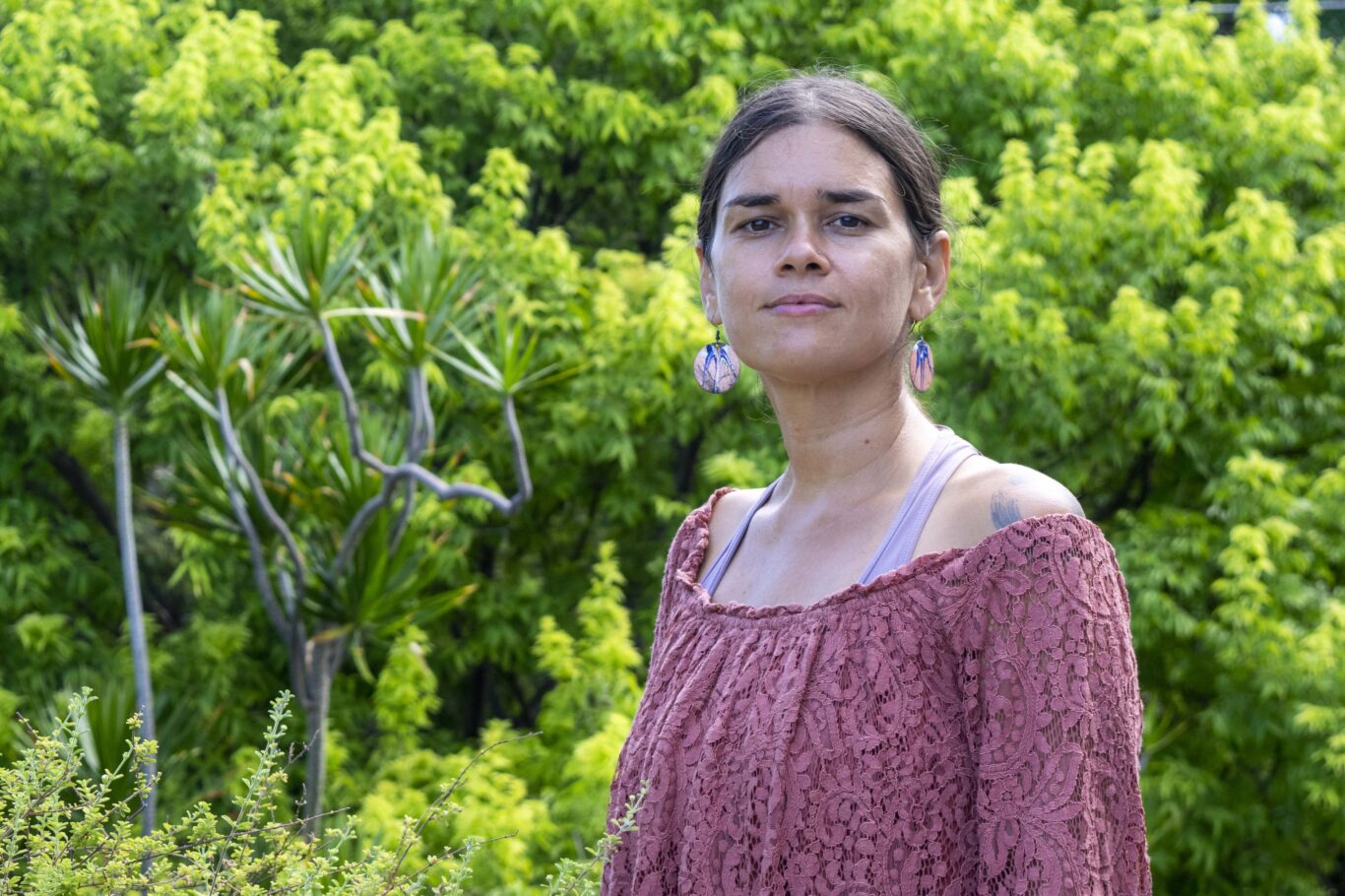
Photography arrived at a difficult time
As a visual artist, my goal is to express the essence of my inner universe, as well as the personal and spiritual journeys I go through. Every experience leads me to reflection: I question my reactions, who I am and where I’m going. This process becomes a ritual that accompanies my observation of life and its various facets.
My work acts as a mirror that reflects the complexity of human beings, inviting others to explore their own narratives, to find beauty in the vulnerability and strength that defines us.
I was born in Pinar del Río. From a young age, the impulse to create was a way of understanding the world, and my mother was the person who guided me through this process of formation and choice.
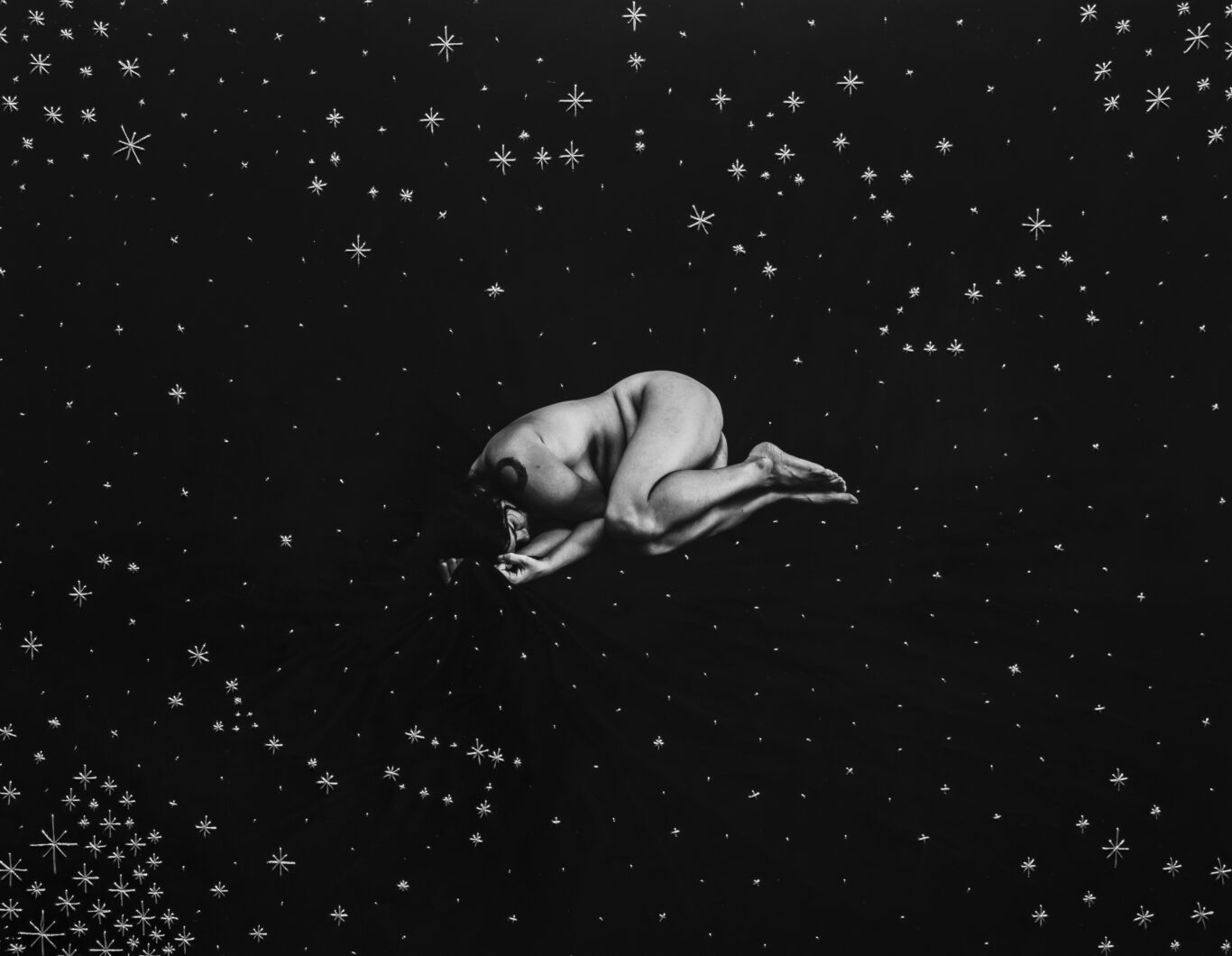
I trained at the San Alejandro Academy of Fine Arts, where I graduated with a degree in painting. After graduating, I went through a period of exploration about what my voice was. It was a very complex process, to the point that at one time I felt lost and stopped creating.
I came to photography at a difficult time, when I felt I had lost my creative direction. The Artistic Photography Course with visual artist Yuri Obregón Batard was key: it restored my confidence and showed me that photography could be much more than technique, but a language.
Later, in the Post F8 Conceptual Photography Lab, also led by Yuri Obregón, I discovered that photography was also concept, history, emotion and memory.
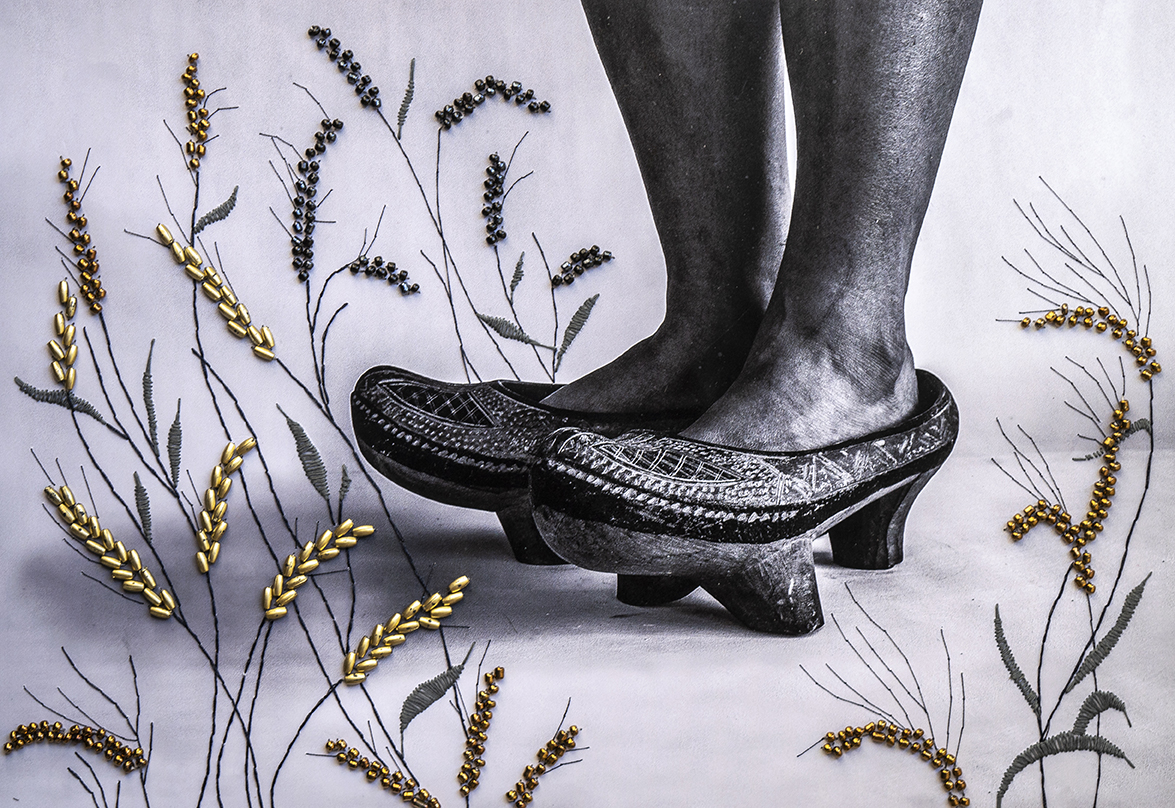
In photography, I found a space to explore who I am, to look within.
For years, I lived disconnected from my body, as if it were a foreign place. The series Mi primer hogar allowed me to reconcile with it, to recognize it as a home, a refuge and a root.
Loving the body with its scars, with its silences, has been an essential part of the process. It speaks of the intimate, of what has been lost and recovered. Art as a way of re-inhabiting oneself.
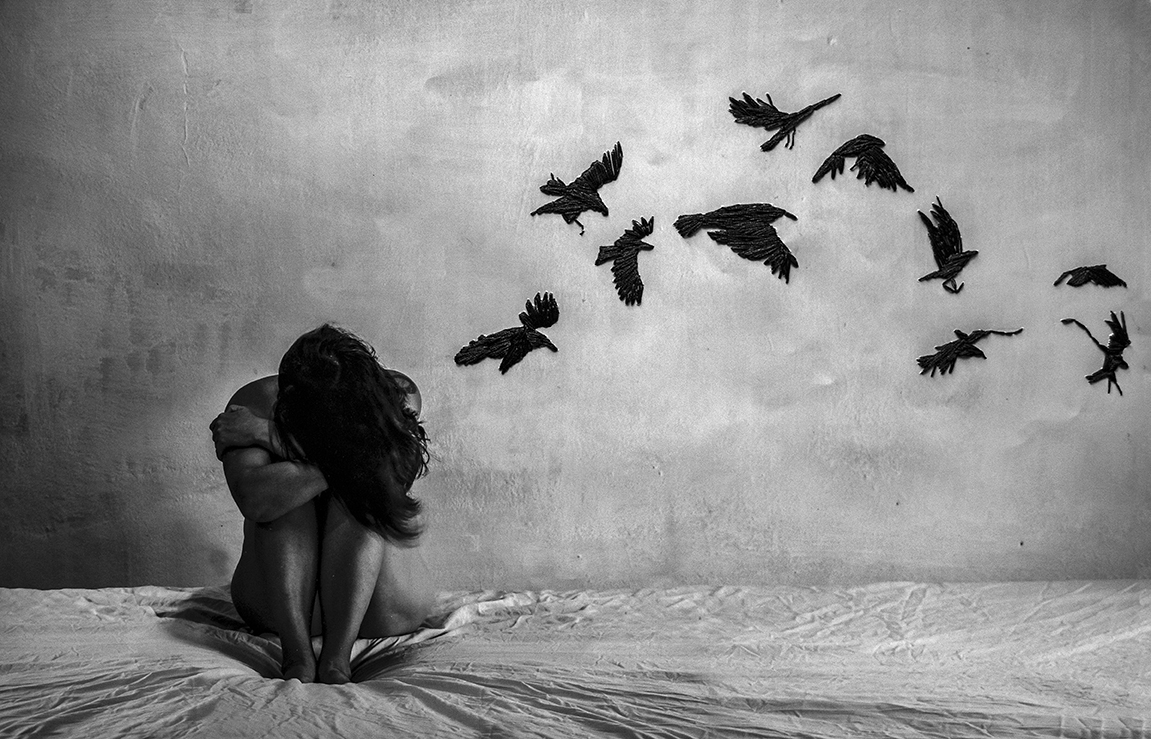
Among the people who have influenced my path is, as mentioned above, Yuri Obregón Batard, without whose teaching I would not have discovered all the possibilities that photography offers.
I am also inspired by artists such as Marta María Pérez, for her symbolic power; Cirenaica Moreira, for her perspective; and Ana Mendieta, who connects me with the spiritual dimension of art, with that relationship between body, land and memory.
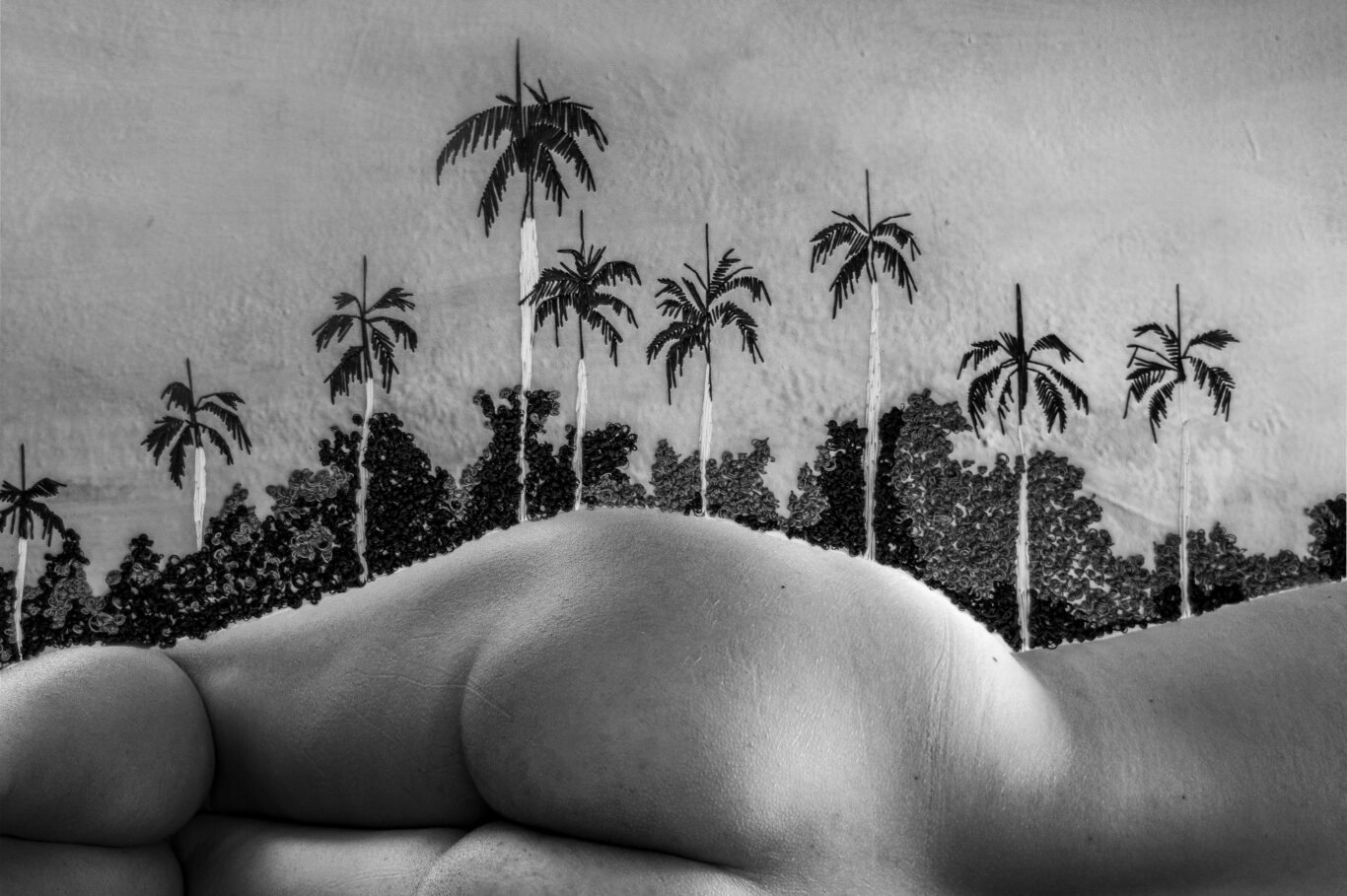
Furthermore, I find a profound resonance in photoembroidery as an artistic practice. This technique fascinated me from the very beginning due to the level of care it demands: embroidering on a printed image requires precision, respect for the medium, and attentive listening to what has already been visually expressed.
Each stitch must be thought over; this technical gesture also becomes a symbolic attitude. The thread not only sews, but underlines and transforms.
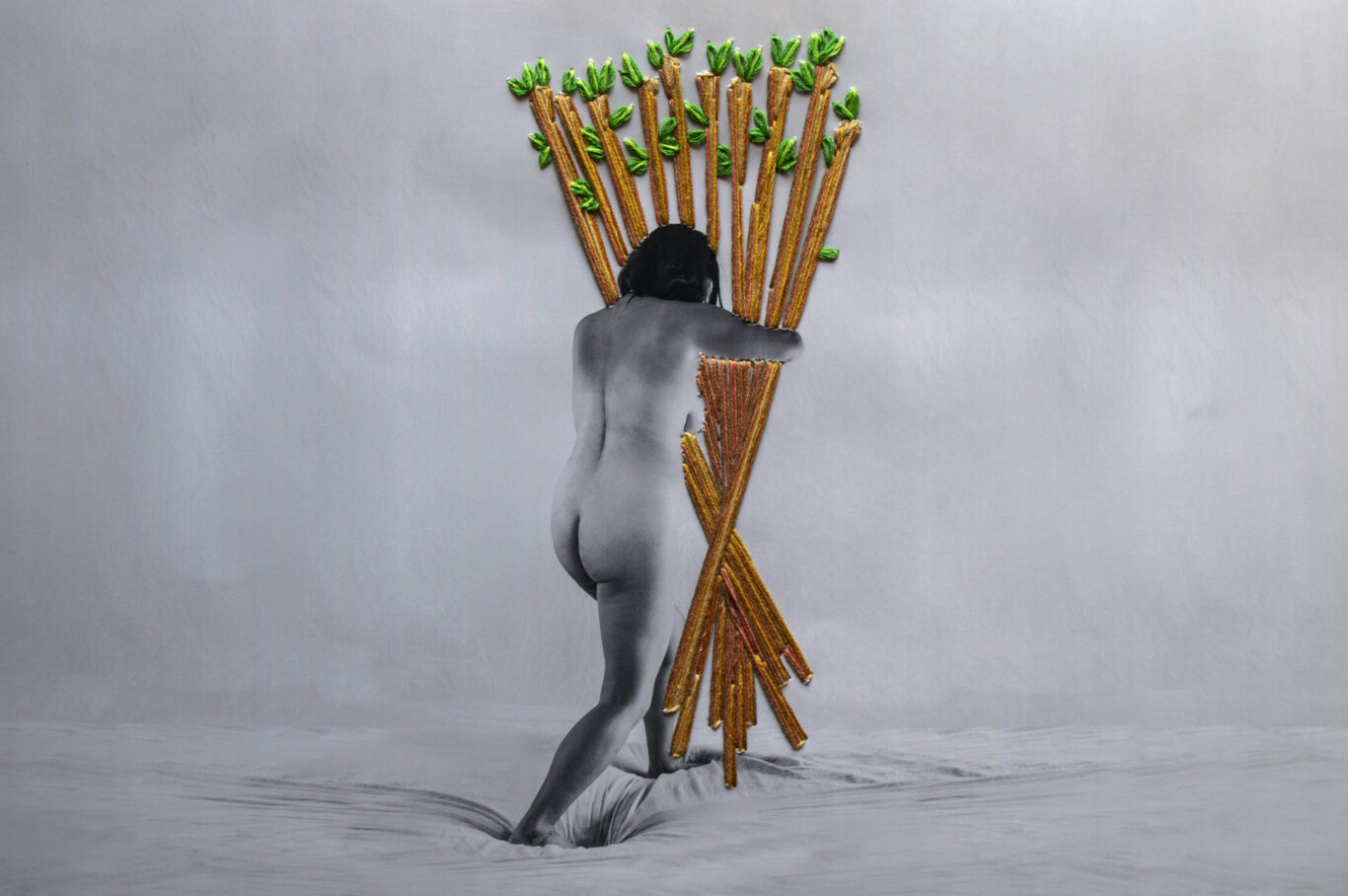
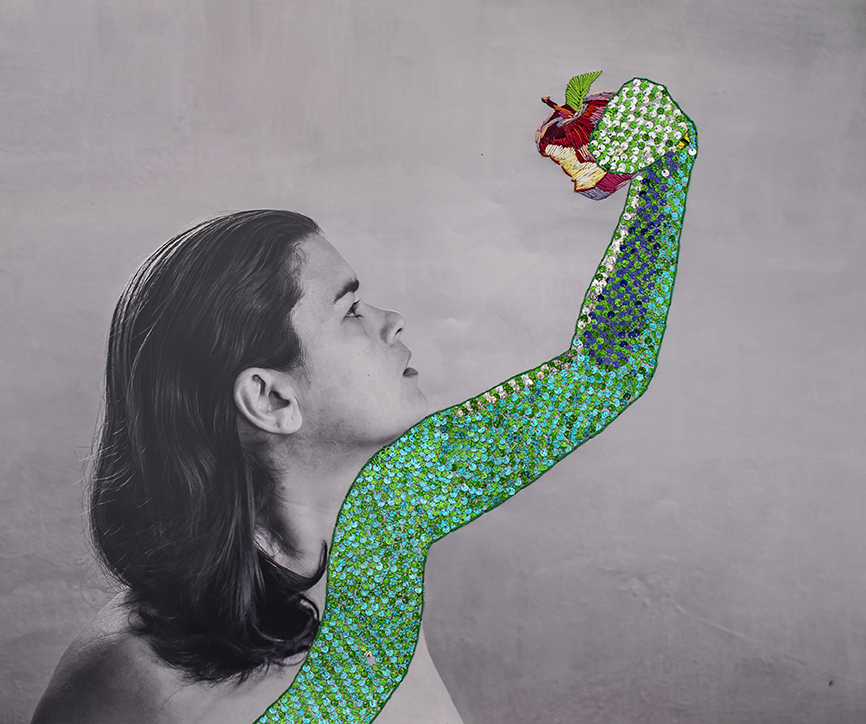
Before creating Mi primer hogar, there were four bodies of work that profoundly influenced my symbolic and emotional search. These are:
Postales del pasado (Postcards from the Past), an installation composed of family photographs and postcards, encapsulated in Petri dishes. In it, I worked with the idea of memory as a fragment, not a complete narrative; like a trace, like an impression that persists.
Working with collage, a fundamental creative exercise, allowed me to develop a visual narrative based on found images that dialogued with each other, and that taught me to compose from intuition, rhythm and symbolic resonance.
Como la luna (Like the Moon), composed of 28 circular pieces — menstrualeras (watercolor on menstrual blood) on cardboard — that represent scenes linked to the cycle of life, to women. In this work, I was able to integrate the symbolic, the corporeal and the spiritual.
In the series El velo (The Veil), I embroidered for the first time and discovered in that gesture a form of meditation in action.
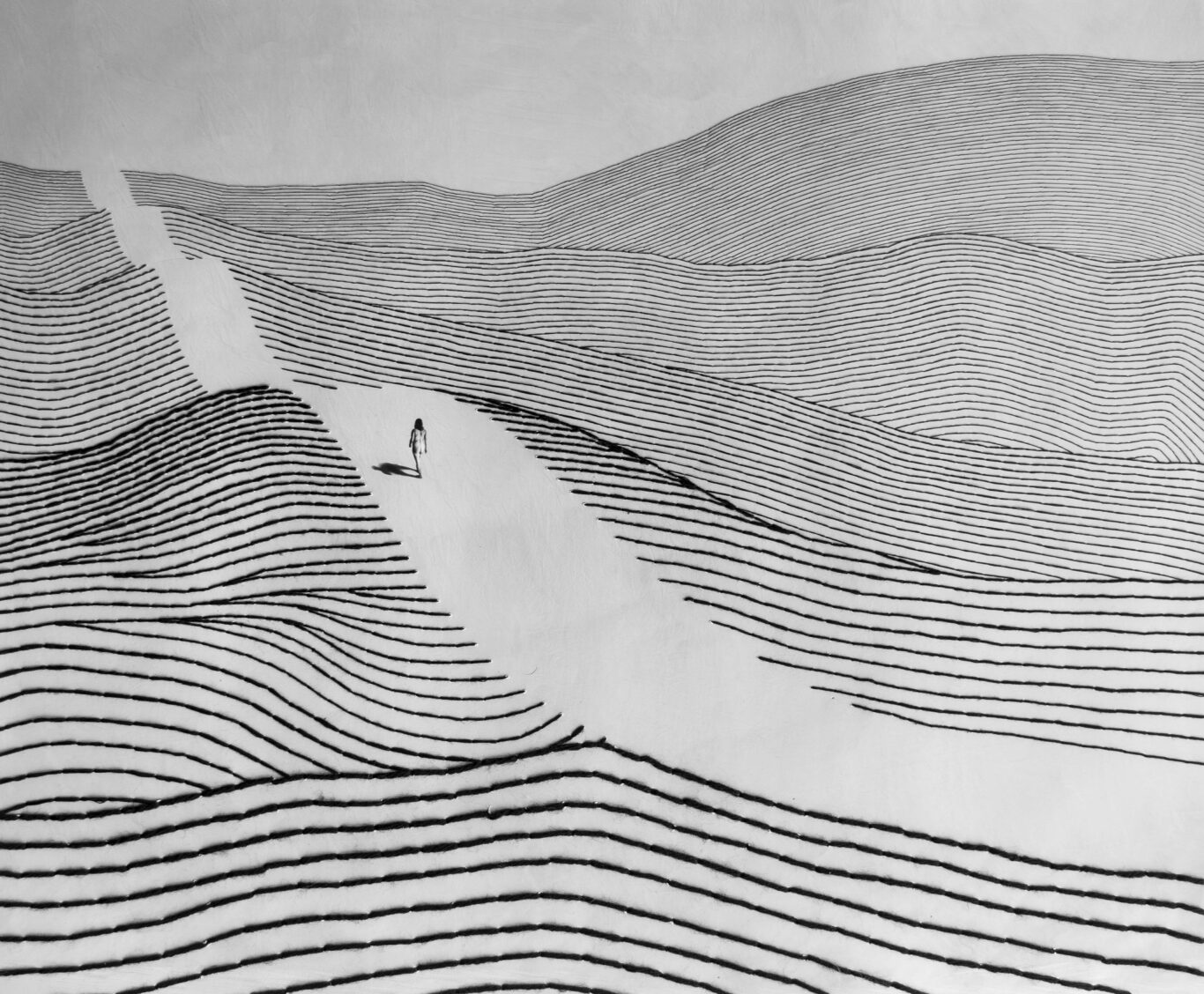
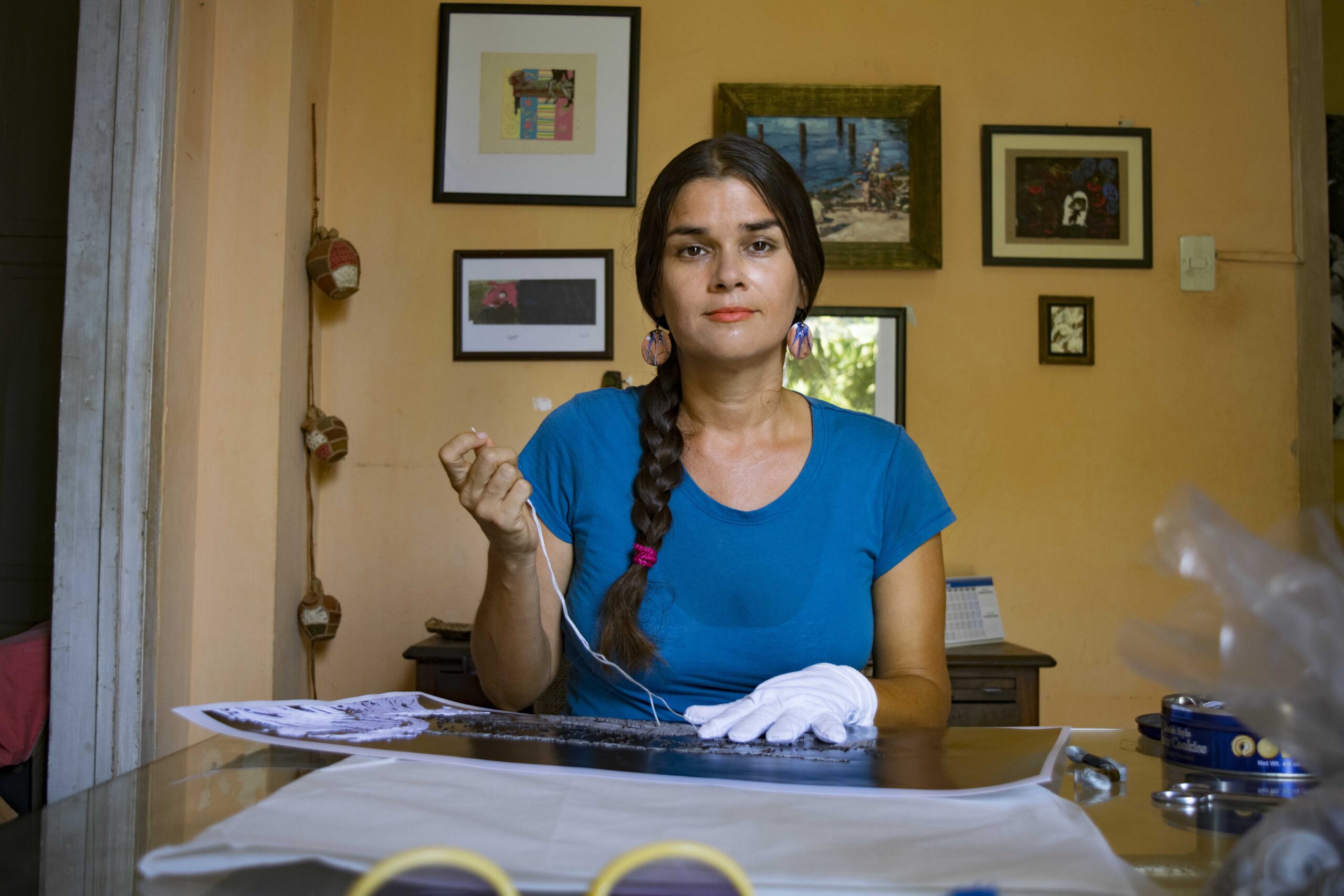
Mi primer hogar
After that journey, I felt the need to turn my gaze toward myself. No longer only toward the lineage or the collective feminine, but toward my own body: as an archive, as a home, as an emotional territory. Thus, Mi primer hogar was born, as an intimate and corporeal continuation of that search.
The first piece in this series was “Floreciendo” (Blossoming). I had taken the image five years earlier, during my apprenticeship in the Artistic Photography Course. It was a creative exercise. We had to photograph a part of our bodies that we didn’t particularly like. I chose my abdomen. For a few years I had been overweight, and I found it uncomfortable to show that area of my body. Two scars also marked my skin, one from an appendectomy and the other from a cesarean section. However, five years later, my perception had changed. I understood that each scar stemmed from a life-or-death experience, and this had taught me about the ability to rise up in the face of difficulties.
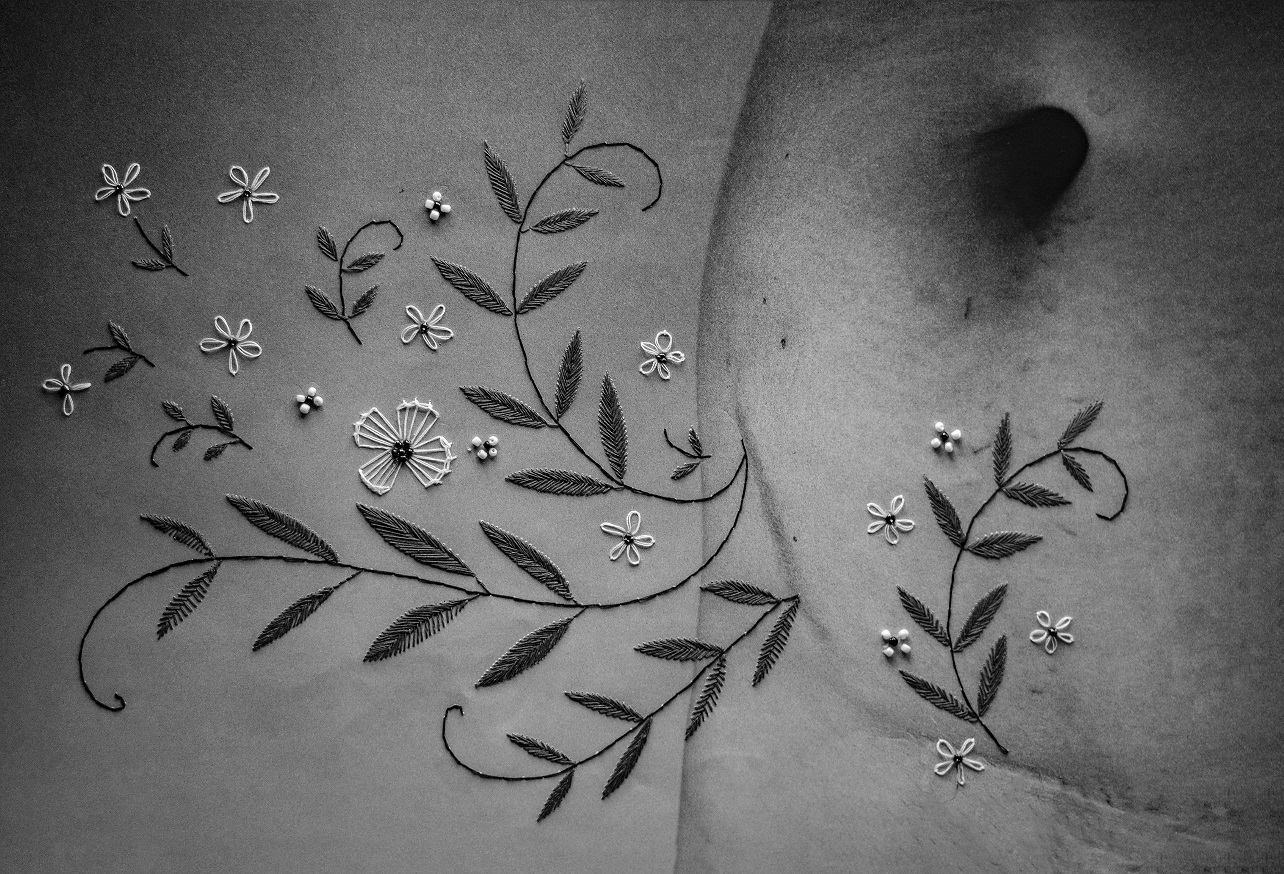
Embroidering on that image became a gesture of reconciliation. Each stitch was a way of saying: “I acknowledge you, I honor you, I inhabit you.” Mi primer hogar is a series born from a very personal need: to reconnect with my body and my history.
I work with photography and embroidery, two languages that complement each other. I take photographs of my body and then embroider over them, as if the thread could express what the image cannot.
For me, embroidery is an intimate, almost ritualistic gesture. A way of listening to what the body holds in silence.
Each stitch demands presence, rhythm and breath. While I embroider, I enter a state of deep attention, where time dissolves and what is internal is revealed. It is a slow process, but full of meaning; each thread that runs through the image is also a way of passing through myself.
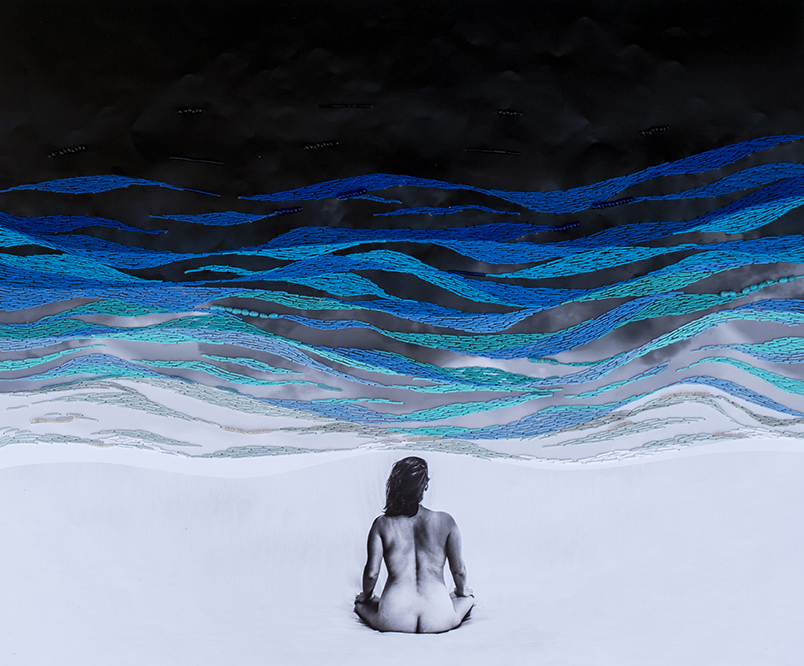
The embroidery is as important as the photography in this series, because it is there that the image transforms into experience.
Showing myself naked in these works is an act of vulnerability, but also of affirmation. It scares me, yes, but I also feel that, in doing so, I invite the viewer to look at their own body with respect, with tenderness. To honor its history.
Mi primer hogar explores the idea that the human being is like a house. It has an exterior that shows the world and an interior that holds its soul. The body becomes the first space we inhabit, and through it I connect with themes such as intimacy, memory and uprooting.
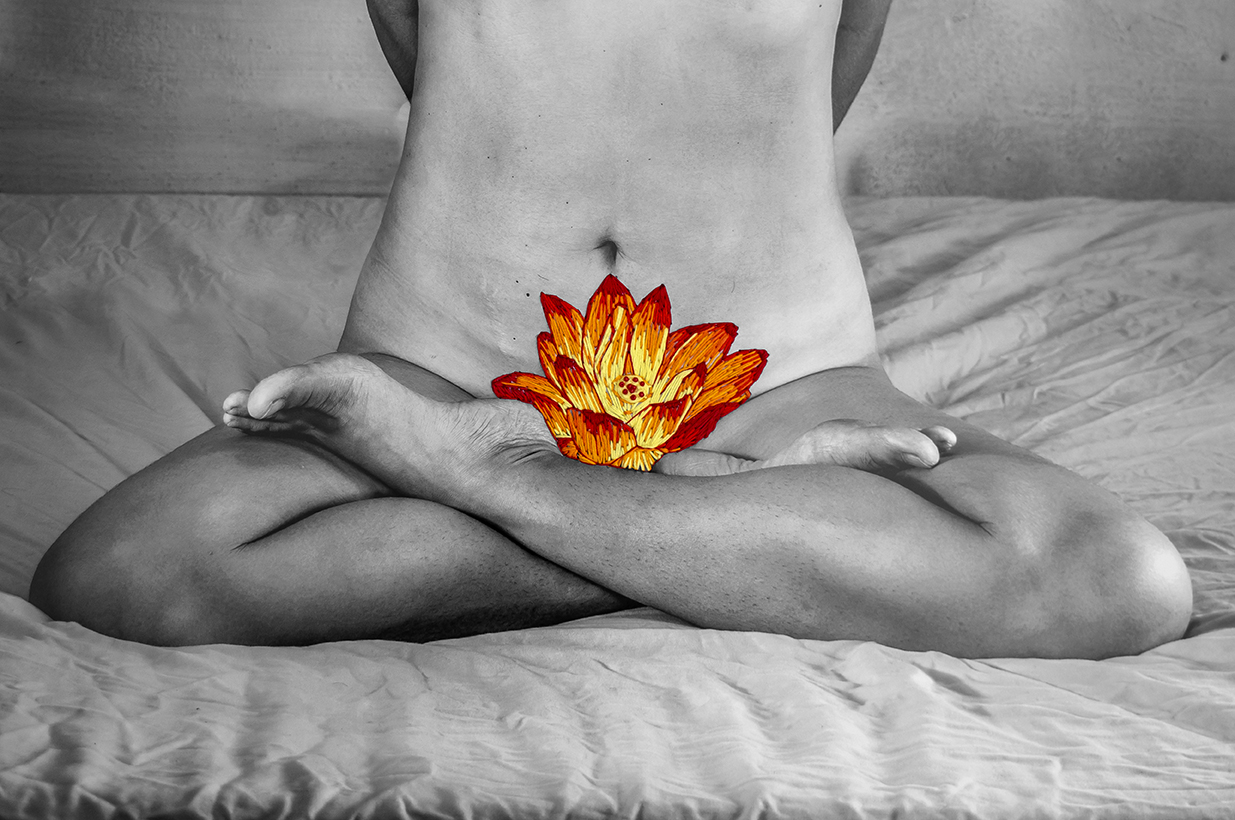
This series has given me the opportunity to heal my relationship with the body, understanding home as a second skin, a place where touch becomes an extension of our existence.
My corporeality is the place from which I perceive and think about space, and it is through this connection that I situate myself in the world.
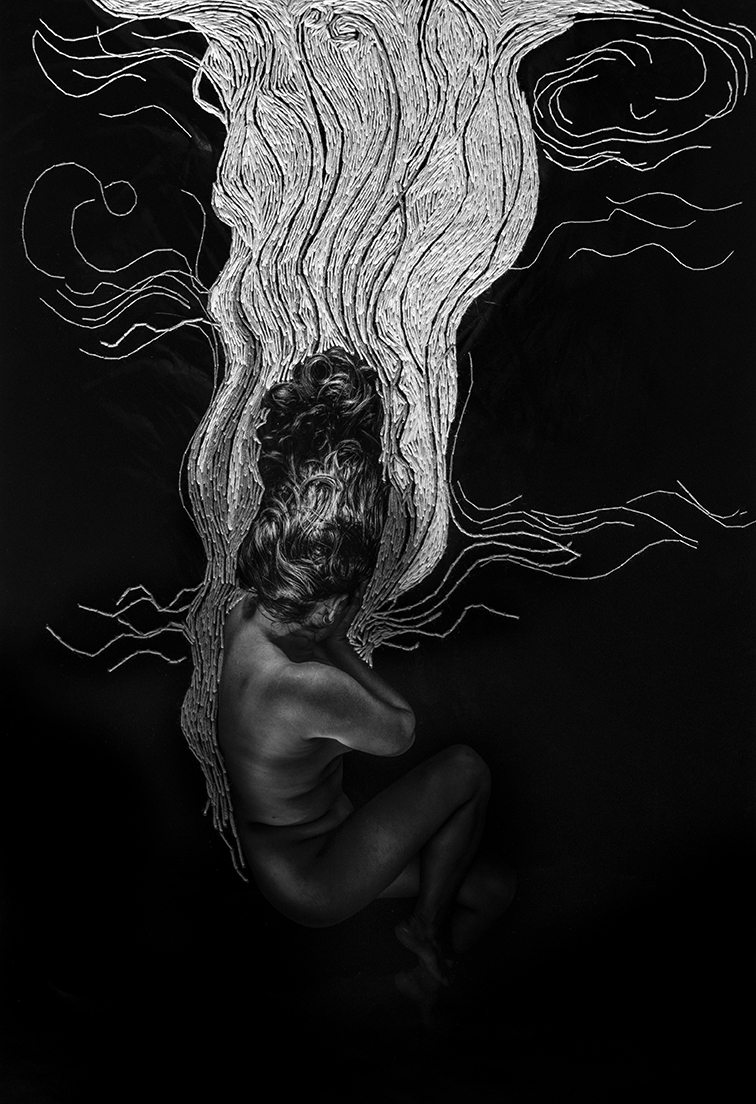
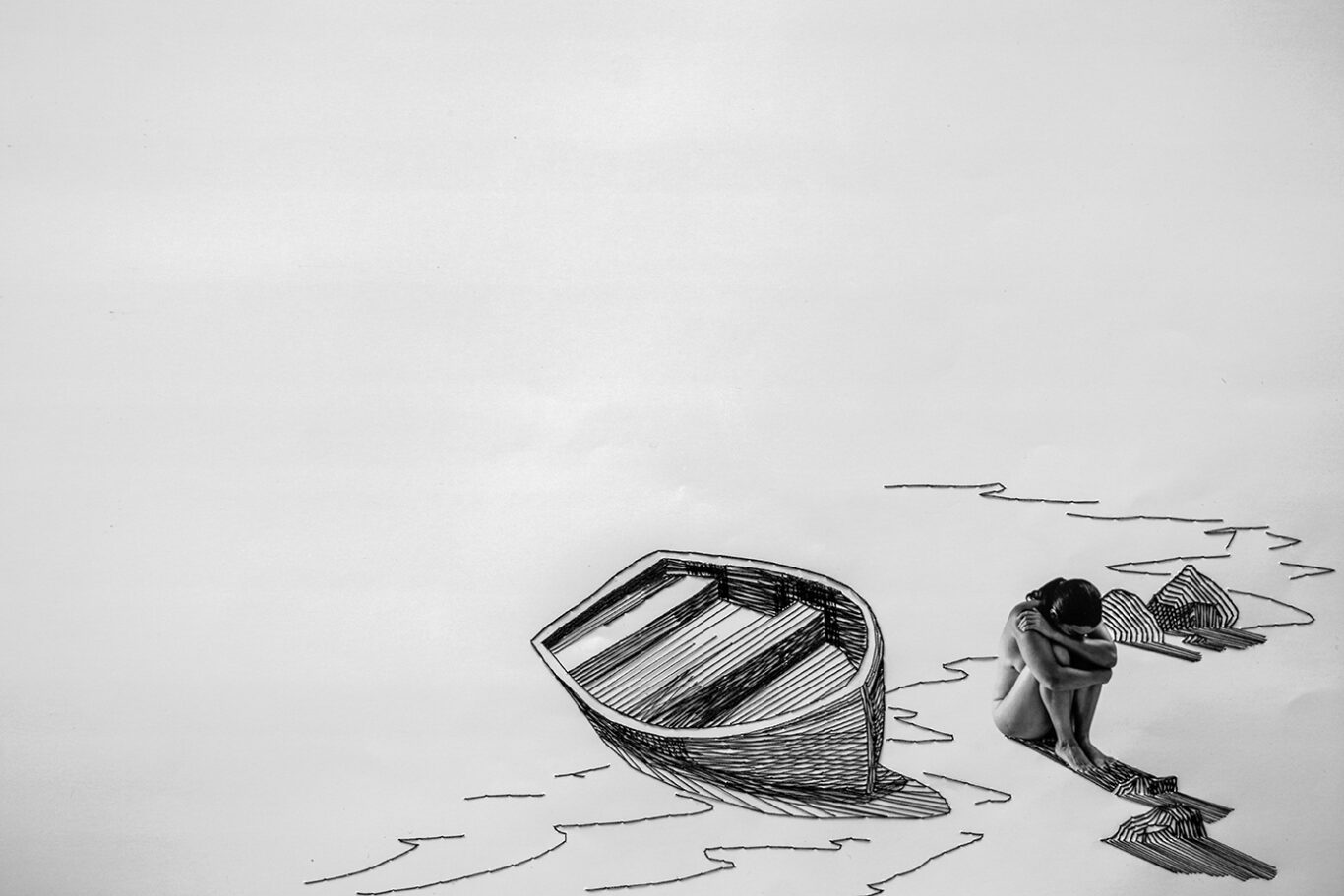
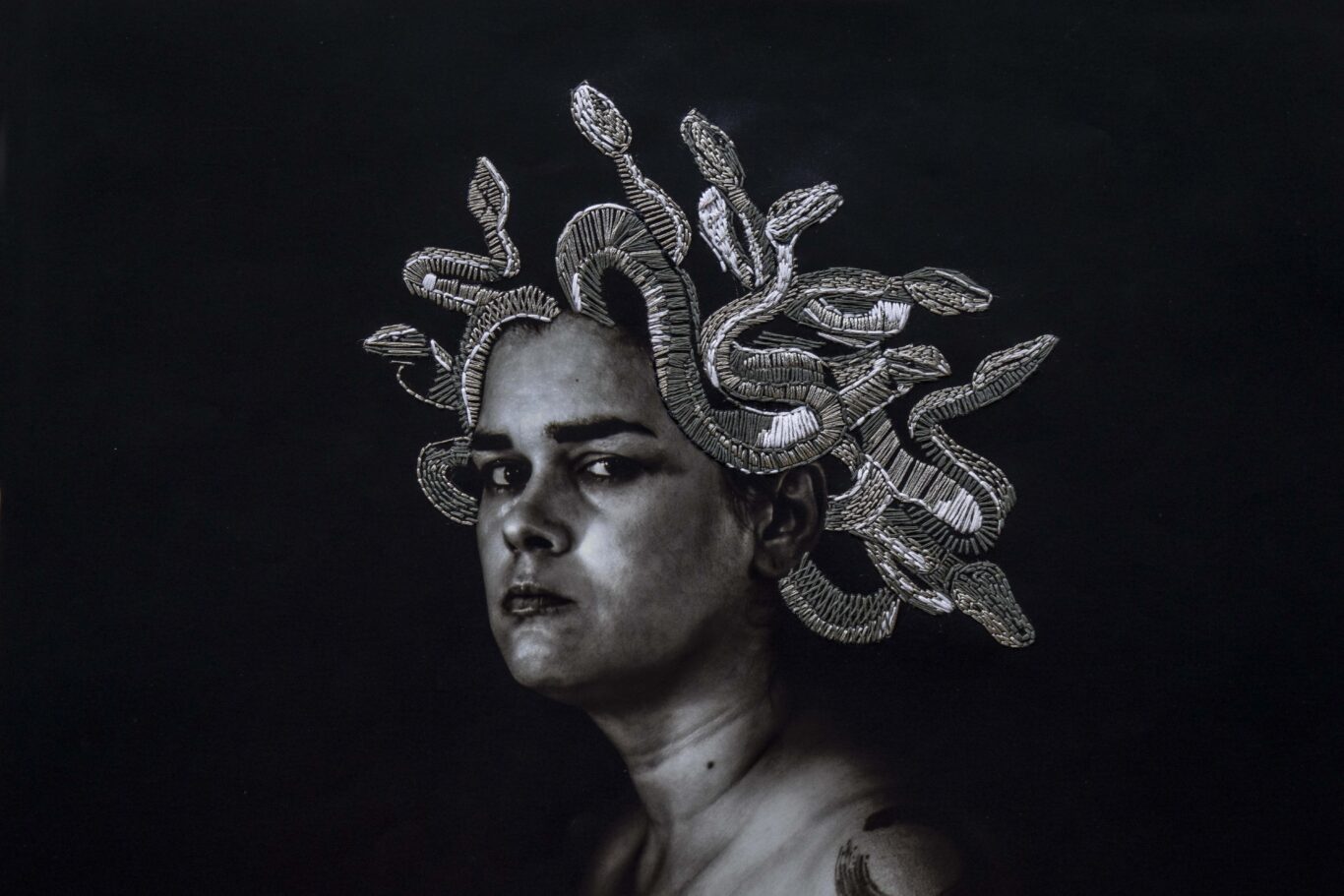
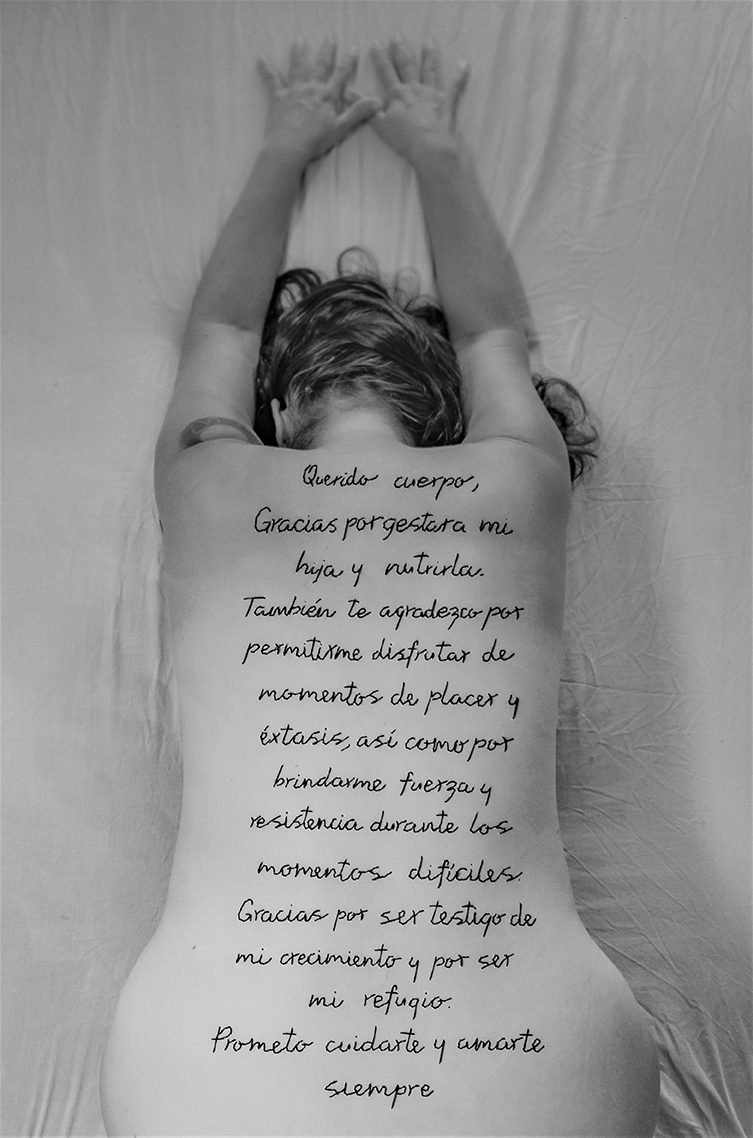
Mi primer hogar is an introspective journey. By depicting life events, I have been able to “listen” to the body and connect with internal sensations.
My intention is to inspire others to heal their own relationship with their bodies and find beauty in their personal stories.

